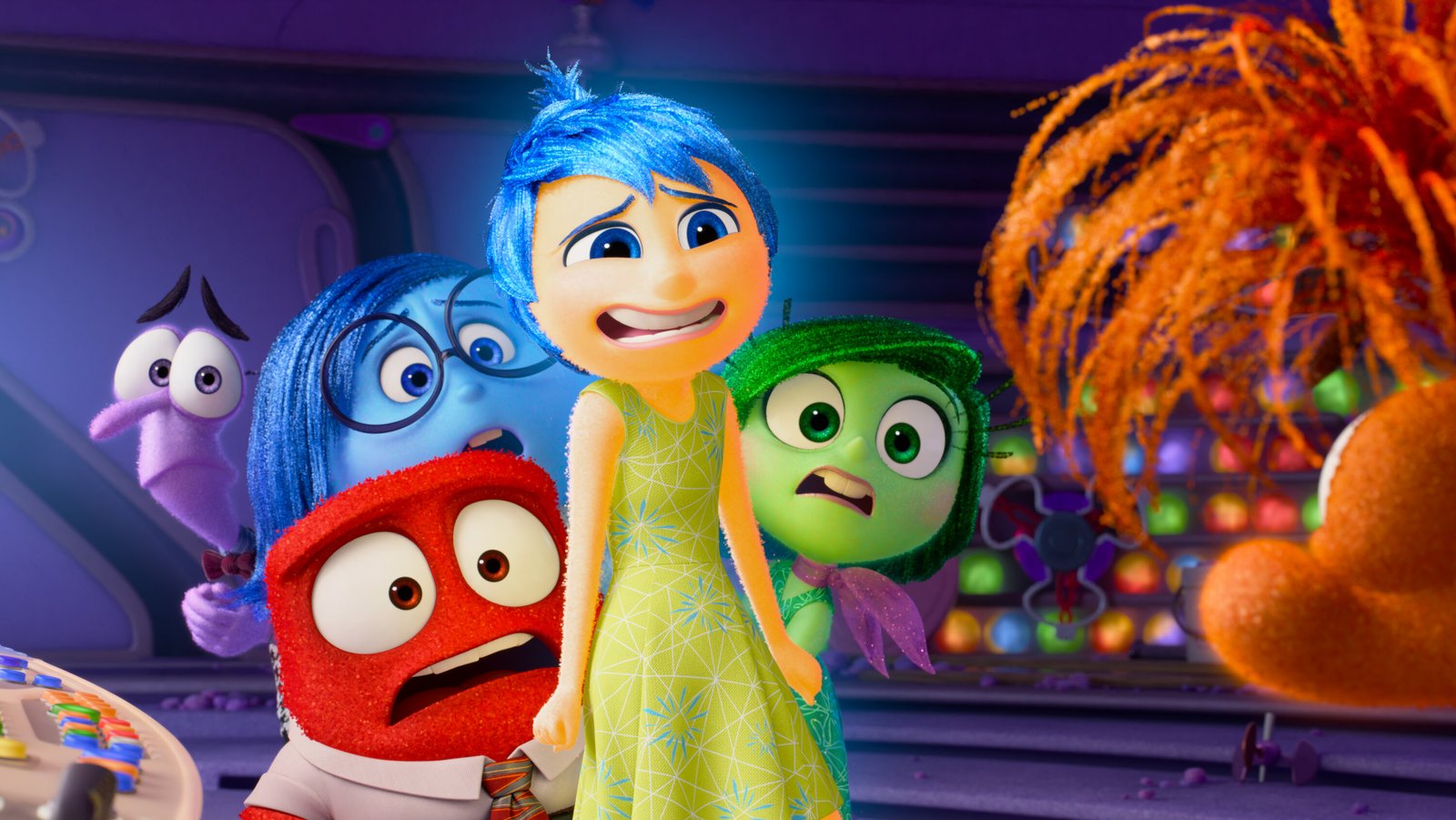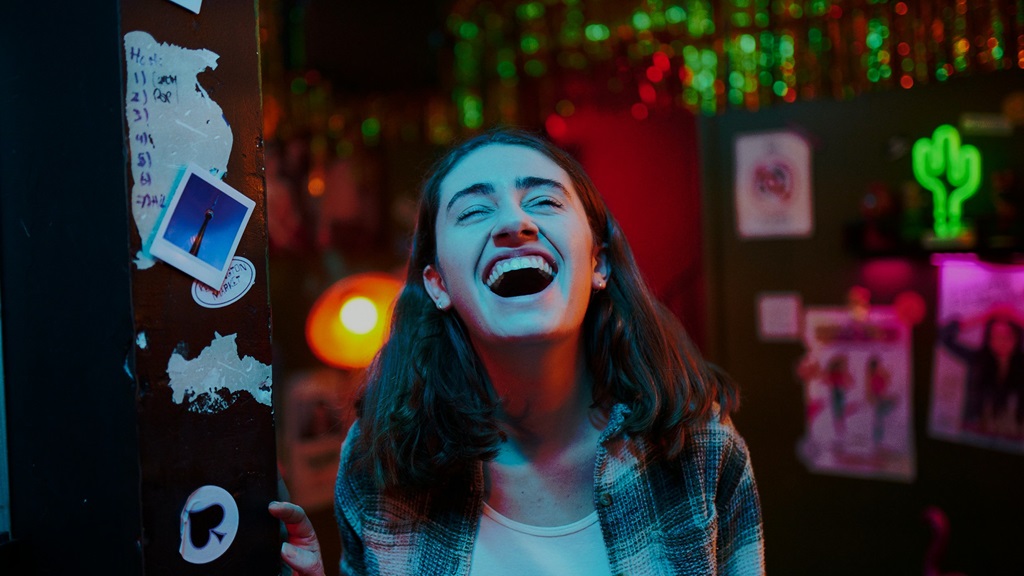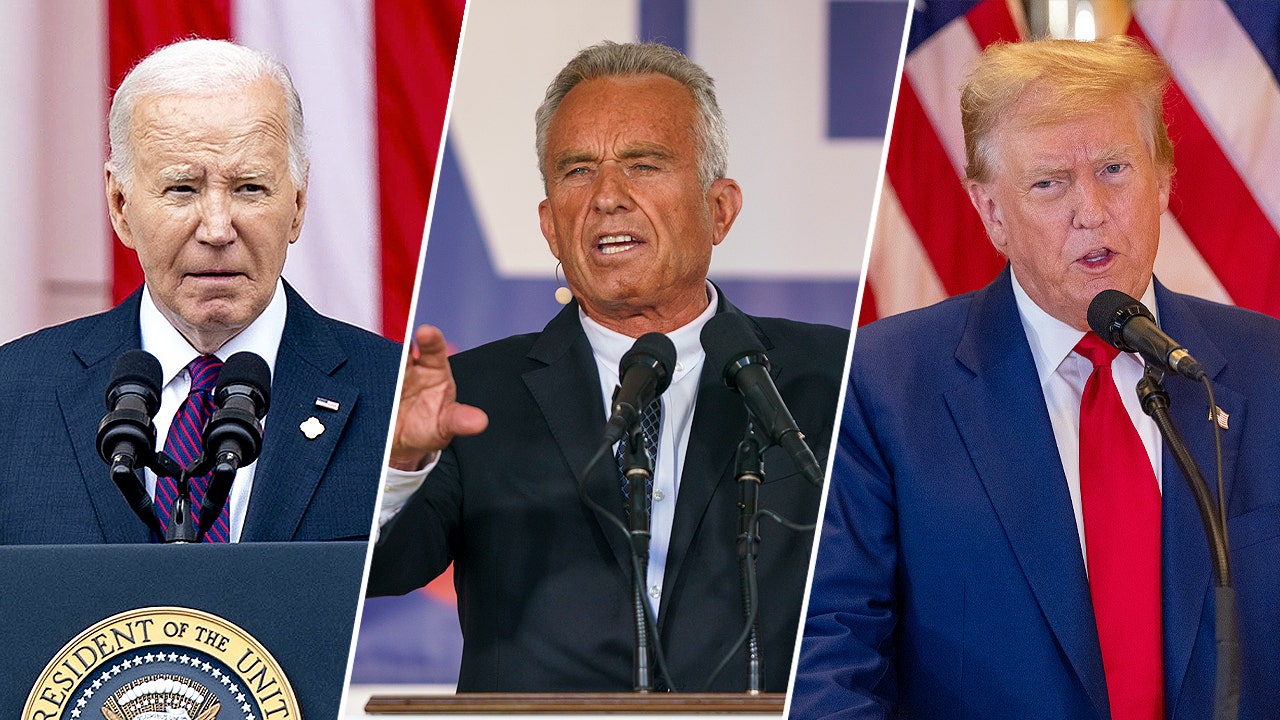Movie Reviews
‘Haikyuu!! The Movie: Decisive Battle at the Garbage Dump’ Review: A Treat for Fans, but Not Many Others

It’s been four years since the end of season 4 of “Haikyuu!!,” the super-popular sports anime about a young high school volleyball team, and now fans will finally get to watch the beginning of the end of the story created by Haruichi Furudate, thanks to the feature film “Haikyuu!! THE MOVIE: Decisive Battle at the Garbage Dump.” Much like last year’s exquisite “The First Slam Dunk,” the movie takes place during a single match, which becomes the epicenter of a clash of ideals and personalities. Unlike that movie, though, this match is rushed, unnecessarily short, and lacking in context.
The problems with “Decisive Battle at the Garbage Dump” begin with its adaptation, which takes about 33 chapters of the manga and compresses them into a single 85-minute movie (compared to the anime’s usual pacing of about 5 chapters per 22-minute episode). Where “Attack on Titan” famously squeezed its final arc over 4 years and many comically-titled seasons, “Haikyuu!!” makes this climactic moment come across as rushed. Due to the short running time and amount of story to cover, this movie is not for newcomers at all.
Much like “Demon Slayer: Mugen Train,” “Decisive Battle at the Garbage Dump” picks up the story from the anime right where it left off, without much concern for either newcomers or established fans who have forgotten where things ended last season — considering it aired in 2020, it feels like a lifetime ago. The movie fully expects the audience to be intimately familiar with the first four seasons of the anime, the character arcs and relationships, and even Karasuno’s team history, because it provides none of that here.
The plot concerns the titular Battle at the Garbage Dump between long-time rivals Karasuno High and Nekoma High, who have faced each other numerous times in practice matches. Now, they’re playing one another in the Nationals Tournament, giving protagonist Shoyo Hinata a chance to play a real match with stakes against friend-rival Kenma Konzume. For Shoyo, the match is not just an important step in winning the whole tournament, but a battle for the soul of Kenma and whether or not he’ll ever learn to enjoy volleyball — which leads to many a tear-inducing moment.
Much of the “Haikyuu!!” anime is about love of the sport, about opening your mind to new experiences, and waiting for the moment when you find your passion even if you weren’t initially expecting it. Particularly, the film highlights Kei Tsukishima’s growing appreciation for the sport, while mostly focusing on Kenma’s reluctance to enjoy playing. Indeed, while the primary characters are clearly the Karasuno players, Kenma is our main character, as we get several flashbacks showcasing his history with volleyball. As for the volleyball and the match itself, “Decisive Battle at the Garbage Dump” looks and feels designed to turn movie theaters into sports arenas filled with cheers and chants, calls for “chance ball” and insults to the ref.
Sports anime tend to fall into one of two categories — superhero stories or character dramas. The former treats skills as inhuman feats of strength, like “Blue Lock,” while the latter tend to be more grounded and actually teach about the sport, portraying real moves and plays, like “Slam Dunk” and “Hajime no Ippo.” When it comes to “Haikyuu!!,” the anime and manga credited for a rise in high school volleyball players in Japan, the story has long served as a rather good introduction to the mechanics and psychology of volleyball. The anime not only explains terms and rules, but also how every little thing impacts a match, from the opposite team’s cheer squad to the role a televised match’s gym lights have on player attention.
The movie continues this, with an exhilarating POV sequence showing everything a setter has to think about when doing a play, an entire subplot about how singling out a player and blocking his attacks demoralizes the entire team, down to simple things like how sweat can ruin a whole play. We see this in Kenma’s arc throughout the film.
Though already a fantastic player in the anime, the movie shows him getting increasingly invested in the sport and the match, and the more he cares, the better he plays — and the more dangerous he becomes to Karasuno. At times, Kenma is portrayed as a proper mustache-twirling villain, a Hannibal Lecter-type genius who is ahead of everyone, and with a cruel sense of humor, while the mentor-mentee relationship between several players across both teams makes for even higher personal stakes than other matches in the anime.
As fast-paced and energetic as the match itself is, however, it is bogged down by the pacing. It is already hard to make what is essentially season 5 of “Haikyuu!!” into a feature film that can stand alone while also be a good continuation of the ongoing story, but the short running time means the film ends up being mostly a series of highlights rather than a properly flowing narrative. There are big emotional pay-offs during the match, sure, but by the time the final whistle is blown, it’s kind of shocking to think they actually played three full sets in so little time. This has more in common with the previous “Haikyuu!!” movies, which were just compilations of the greatest moments of each season, rather than a story made for the big screen first.
This comes at the cost of the characters, too, as the focus on Kenma and Shoyo’s relationship means the film glosses over the rest of the cast. Though everyone gets a moment to shine, the film relies heavily on the audience filling in the gaps of the other individual rivalries and even the history between the two teams (the title itself never gets properly explained in the film, so you’ll have to remember the scene in which it was explained, way back in Season 1). What is supposed to be Karasuno’s biggest match ever ends up being the shortest in the entire series.
If the plot of “Decisive Battle at the Garbage Dump” suffers from its transition from TV to film, the animation at least gets a big glow-up. Though the characters look just as they do in the anime, the big budget allows for characters’ facial expressions and subtle body movements to get as much attention as the big volleyball plays and the spikes. Though there is some 3D used, it is to give more impact and flexibility to the 2D, rather than replace it. A POV sequence from Kenma’s perspective in which the action speeds up to showcase the adrenaline and rush of the sport, before slowing down in a climactic moment, is a definitive highlight of the film and almost justifies this entire endeavor.
“‘Haikyuu!! THE MOVIE: Decisive Battle at the Garbage Dump” has enough moments of volleyball thrill to satisfy fans who have waited four years for the return of Karasuno, but when the credits start rolling, and it becomes clear just how much story is left to tell. Mostly, it’s unclear what exactly was won by avoiding a fifth season and rushing through the climax of this entire story.
Score: C+
Crunchyroll will release “Haikyuu!! The Movie: Decisive Battle at the Garbage Dump” in theaters on Friday, May 31.

Movie Reviews
“Inside Out 2” is Good, but is that Good Enough? (Movie Review)

When it was released in 2015, Pete Docter’s “Inside Out” was a seminal moment for Pixar. Coming on the heels of a pair of films that didn’t connect with audiences or critics in the same way that much of the studio’s earlier work had (2012’s “Brave” and 2013’s “Monsters University”), “Inside Out” saw Pixar out to prove they still had it. And as it turned out, they absolutely did.
After some decidedly unflattering discourse discussing the studio’s new penchant for favoring sequels and prequels over original material, “Inside Out” was an original film that hit every possible benchmark for success: it became one of the best-reviewed films Pixar had ever made, grossed just shy of a billion dollars, and won an Oscar. “Inside Out” is a truly stunning film, one that builds upon a bedrock of remarkably nuanced emotional intelligence to deliver an animated feature just as engaging philosophically as it is as a piece of entertainment.
Now, in 2024, Pixar is in a very different position. Despite the fact that the overwhelming majority of Pixar’s recent output has been incredibly well-received original films, these films have not been released in theaters. This is partially due to COVID-related lockdowns and partially due to Disney’s insistence on betting every chip possible on their streaming service, Disney+. As a result, films like “Soul,” “Luca,” and “Turning Red” (all of which are absolutely wonderful and unique works that deserve to be acknowledged as modern classics within the Pixar oeuvre) were not released in theaters and in their place, the aggressively lackluster films “Lightyear” and “Elemental” were. Thus, Pixar has been pushed back into a very similar corner, one in which their artistic and commercial viability has been questioned from every side, including parent-company Disney most of all.
So Kelsey Mann’s “Inside Out 2” finds itself being released to a scrutinizing media environment, trying to hit every possible quadrant for success once more, just like its predecessor. But does “Inside Out 2” have what it takes to live up to the critical, commercial, and cultural juggernaut that was the first film?
5. Weak Spot: Commodity Over Character
One of the first things to strike this writer as strange in the lead-up to “Inside Out 2” was the lack of returning creatives, both in front of and behind the digital camera. While Amy Poehler is back, as are several others, there are numerous highly notable absences that one does not typically see in Pixar sequels. Neither Bill Hader nor Mindy Kaling have returned to their roles of Fear or Disgust, respectively, and even composer Michael Giacchino, whose score for the first film has become so indelibly ingrained in the minds and memories of audiences, is woefully missing here.
This is all strange, given the lengths Pixar has gone to actively preserve these kinds of creative teams in the past. All four Toy Story films have kept the core voice cast involved as much as possible, and you don’t see Randy Newman not returning to score one of those sequels. In and of itself, this observation is not a problem, but it’s indicative of a larger systemic issue. “Inside Out” was a film about characters, and “Inside Out 2” flattens those characters into commodities in practically every way.
Part of this has to do with the sheer number of characters in “Inside Out 2.” By introducing four new Emotions to the cast, “Inside Out 2” is a far more crowded film, one that feels ultimately unable to devote worthwhile time to properly defining or developing its characters.
As an easy example, in “Inside Out,” Bill Hader as Fear felt like a real character. We spent meaningful time with him, both with the rest of the Emotions and in solidarity, and came to understand his role within Riley’s emotional state on many levels. In “Inside Out 2,” Fear is a caricature of Hader’s original performance. New voice actor Tony Hale does a great job, but the character himself is defined by the broadest strokes imaginable here, and it’s to the overall detriment of the character and the film. In juggling so many more characters and moving pieces, “Inside Out 2” loses the stark clarity, focus, and impact of the first film and muddies the central metaphor at the series’ core.
4. Maya Hawke as Anxiety
The one new emotion who truly shines in “Inside Out 2” is Anxiety, voiced delightfully by Maya Hawke.
Without delving too deeply into specifics to preserve some of the film’s later surprises, Anxiety’s role in the story stands out as a highlight where the emotional intelligence of “Inside Out 2” matches that of the first film. The portrayal of Anxiety manages to convey with genuine subtlety and nuance the ways in which anxiety can impact someone, especially during adolescence.
Maya Hawke’s vocal performance is exceptional, effectively capturing the complexities of Anxiety’s motivations. Supported by the strong writing of the character in Meg LeFauve & Dave Holstein’s script and stunning animation, Anxiety emerges as one of the most skillfully crafted and impactful elements of “Inside Out 2.”
3. Weak Spot: Maintaining the Status Quo
There are several instances throughout the runtime of “Inside Out 2” where it feels like the filmmakers are yearning to break free from the confines of delivering ‘another Inside Out’ and instead offer something beyond that preconceived notion. Throughout the film, concepts such as Riley driving herself without the influence of any Emotions, delving into the emotions that constitute the Emotions themselves, and exploring how one’s primary emotions evolve over time are all hinted at. However, disappointingly, none of these ideas are explored with any real depth.
Instead, “Inside Out 2” appears determined to cling to the status quo established by its predecessor, often to its own detriment. While these ideas suggest potential avenues for a transformative story involving Riley and her emotions, the film fails to fully realize any of them. Instead, the overarching theme of the film feels like a slight variation on the deeper theme of the first film. Similarly, the narrative of “Inside Out 2” feels deliberately reminiscent of its predecessor, lacking the imagination in staging, settings, or character development that made the original so memorable.
2. Weak Spot: A Lack of Imagination
The first “Inside Out” feels bursting with creativity, imagination, and monumental stakes. While the external story is simply about Riley and her family moving to a new city and her contemplating running away from home, the narrative feels almost mythic due to the meticulous interweaving of a propulsive narrative and profound themes by Docter and his team.
In contrast, “Inside Out 2” often feels oddly insular and small-scale in the wrong ways. While using a weekend away at hockey camp as the narrative’s core is not a bad idea, as it serves as a microcosm of Riley’s impending adolescence, the film fails to emotionally convey the magnitude of this event as effectively as it does intellectually.
This is exacerbated by an in-brain adventure for the Emotions that feels more like a straightforward task than the grand odyssey of the first film. While the first film also revolved around retrieving a MacGuffin, it did so to facilitate character growth and thematic exploration. In “Inside Out 2,” this narrative structure remains, but the essential components feel far more scarce and less impactful.
1. The Vault
The true standout scene of “Inside Out 2” revolves around a vault within Riley’s head dedicated to safeguarding her secrets. Within this vault lies a plethora of hilariously clever gags, including a recurring one that parents of very young children will undoubtedly find immensely enjoyable. What sets this sequence apart is its utilization of a mixed-media style of animation, which deviates from Pixar’s typical aesthetic in unexpected ways, enhancing the scene’s impact. There’s a genuine exuberance and innovative energy to this moment, which the film could have benefited from incorporating more extensively.
(B-)
“Inside Out 2” is a very well-made film. It’s funny, charming, and compelling, but it doesn’t quite reach the same level of humor, charm, and emotional resonance as the first “Inside Out” film. While it represents an improvement over Pixar’s previous theatrical releases, “Lightyear” and “Elemental,” it falls short of the artistic fulfillment and singular vision found in recent works like “Soul” by Pete Docter and Kemp Powers, “Luca” by Enrico Casarosa, and “Turning Red” by Domee Shi.
Although “Inside Out 2” isn’t a disaster, it feels like a movie that prioritizes mass appeal and accessibility over passionate storytelling and creative vision at every turn.
Movie Reviews
'Inside Out 2' movie review: Featuring the feels, their feats and then some

Nearly 10 years after the first instalment, out of the classic Pixar-Disney partnership, comes a peek into the life of a teenage Riley in the sequel to Inside Out. Much like its predecessor, the movie is intense, uplifting and, understandably, emotional.
The introduction of new characters — emotions and beyond — succeeds in keeping the audience guessing. True to form, the script and animation hold several inside jokes and lean heavily on wordplay. Amidst the dry, chuckle-drawing humour, the writers have also managed to pepper in more complex concepts. This imagery is likely to stick with you after the viewing, drawing reflections from the outside in, ironically.
Even in the innovation and progressing timeline, there is definitely a sense of familiarity. Characters navigate the mind landscape, and make an arduous journey with obstacle after obstacle, which sometimes does seem to drag on.
The voice cast powers this delicate script forward with noticeable nuance, despite some replacements and additions. Amy Poehler continues to be a convincing (and this time, a more likeable) Joy, while Maya Hawke’s Anxiety carries a nervous and excited energy central to the story.
The actors also manage to keep pace with the development of their characters into more multi-dimensional personalities. For those who enjoyed, related to and fondly remember the characters from the first film, the second offers great story arcs to love, alongside new fun introductions.
While Pixar’s bright, lively animation will work great to keep younger audiences entertained, depictions of mental health — particularly a panic attack — might warrant a conversation, context and maybe some reassurance for kids and teens. For older audiences, the movie can come off like one long session of therapy — loads of self-reflection, uncertainty, tears, awareness and hopefully, acceptance.
The story peels back the layers of the confusion, hopefulness and embarrassment of the teen years in a way that feels uncomfortable at times, and profound at others.
In all, Inside Out 2, holds tears, laughs and a slew of, “Oh, I see what you did there”. While it isn’t the most gripping watch throughout, it is thoughtful and sweet, making the film a lovely choice for a quiet day with family or friends. My top tip is to make sure you stick around for the post-credits scene (there’s more than one)!
Published 15 June 2024, 09:56 IST
Movie Reviews
Music Shop Murthy Review: Sincere But Overdone

BOTTOM LINE
Sincere But Overdone
RATING
2.25/5
CENSOR
U/A, 2h 7m
 What Is the Film About?
What Is the Film About?
Murthy (Ajay Ghosh) is a music shop owner in Vinukonda with a wife and two grown-up kids. The shop is a burden on the family as it yields no financial gains. However, Murthy is passionate about music and doesn’t let it go despite daily taunts from wife.
Murthy meets a young girl, Anjana and they immediately form a bond over their mutual liking for music. She inspired Murthy to become a DJ by following his passion. The movie’s story is about whether Murthy achieved the goal or not.
Performances
Music Shop Murthy is Ajay Ghosh’s one-man show. His journey is the movie and he does a neat job with it. The fact that the character is closer to the actor’s age helps to a large degree.
Ajay Ghosh goes about the proceedings in his usual way. However, at times he feels overdoing the goody-good act a bit. It makes the narrative needlessly syrupy, at times, as a result. He delivers in the emotional scenes and manages to pass off as being an old-age DJ without entirely looking ridiculous. Needless to say, as an actor, it is a memorable role for him as he gets a full-fledged lead part.
Chandini Chowdary plays a youngster who lives on her terms. The accent and body language feel too urban for the backdrop (Vinukonda), leaving that aside she is confident and plays a key role in delivering the message.
For Amani, this is a walk in the park. She has done similar roles in the past and does it again with the same conviction and emotion without losing a beat. Despite nothing unusual, she still stands out for the same reason.
 Analysis
Analysis
Siva Paladugu writes and directs Music Shop Murthy. It is a feel-good underdog story where the protagonist rises and shines against all the odds. The difference here from other such genre films is the lead who is an aged guy.
Right from the opening we know where Music Shop Murthy is headed. The world establishment makes it clear and so does the narrative as it unfolds. And still, we don’t mind it or lose interest, and that’s because of the earnestness with which the proceedings happen.
There is sincerity in Murthy, and although overdone, it works eventually. Similarly, the scenarios and the drama he is entangled in feel relatable. But, more than anything it is the age factor added to the story that makes one root for the character.
Age should not make one lose interest in what they are passionate about – this theme and the situations centred on the DJ aspect help Music Shop Murthy escape being completely outdated.
The moments between Murthy and Anjana (played by Chandini Chowdhary) bring a little bit of freshness to the proceedings. The escalation of drama in the pre-interval and interval as a consequence makes it a decent half overall.
The problem for Music Shop Murthy lies in the second half. Even within a predictable tale, the fresh element seen in the first half is missing here as the narrative ticks all the genre-related clichés.
The feel-good factor turns into a fantasy of sorts, the way things happen to our good-at-heart guy. The struggle doesn’t register and neither does the victory. Things just go through the motions as they must conclude.
It is again at the pre-climax and climax portions when the final drama occurs, there is some emotional connection. The sentiments, however predictable and cliché, and contrived at places, still work and leave us with a sense of fulfilment. The end goal is achieved.
Overall, Music Shop Murthy is a routine, but passable underdog story – the kind which is a harmless watch. The neat message and relatability are an additional bonus. Watch it if you like feel-good dramas even if they follow an utterly clichéd path.
 Performances by Others Actors
Performances by Others Actors
Music Shop Murthy has a limited but decent casting of recognisable faces. Unfortunately, none barring Dayanandh Reddy have any worthwhile part. Dayanandh, for a change, gets a positive part which comes as a mild surprise as he is used to playing the opposite in such setups. Senior actor Bhanu Chander feels wasted playing an utterly one-dimensional part. The same is the case with Amit Sharma.
 Music and Other Departments?
Music and Other Departments?
Pavan’s music is lacklustre for a film that is supposed to have music at its heart. The DJ bits are fine, but the regular songs are not up to the mark. The cinematography is below par if one looks at it from the big screen perspective. The editing is alright and so is the writing that works despite the utter routine content it dwells in.
Highlights?
Ajay Ghosh
Message
Few Dialogues (Even Though Predictable)
Drawbacks?
Routineness
Feels Rushed
Contrived Emotions At Places
Lack Of Memorable Music
Did I Enjoy It?
Yes, Few Parts
Will You Recommend It?
Yes, But With Reservations and to those who like underdog winning stories.
Music Shop Murthy Movie Review by M9

-

 Movie Reviews1 week ago
Movie Reviews1 week agoStream It Or Skip It: ‘Under Paris’ on Netflix, a shark-in-the-Seine thriller that delivers the ludicrousness you crave
-

 News1 week ago
News1 week agoWoman handcuffed in police car hit by freight train reaches $8.5M settlement
-

 News1 week ago
News1 week agoIsrael used a U.S.-made bomb in a deadly U.N. school strike in Gaza
-

 World1 week ago
World1 week agoEconomy, migration: Voters' main concerns ahead of elections
-

 Politics1 week ago
Politics1 week agoTrump campaign accelerates vetting of potential running mates
-

 Movie Reviews1 week ago
Movie Reviews1 week agoShort Film Review: Blue and White (2022) by Hiroyuki Nishiyama
-

 World1 week ago
World1 week agoFrance to provide Ukraine with its Mirage combat aircraft
-

 World1 week ago
World1 week agoWorld leaders, veterans mark D-Day’s 80th anniversary in France





















